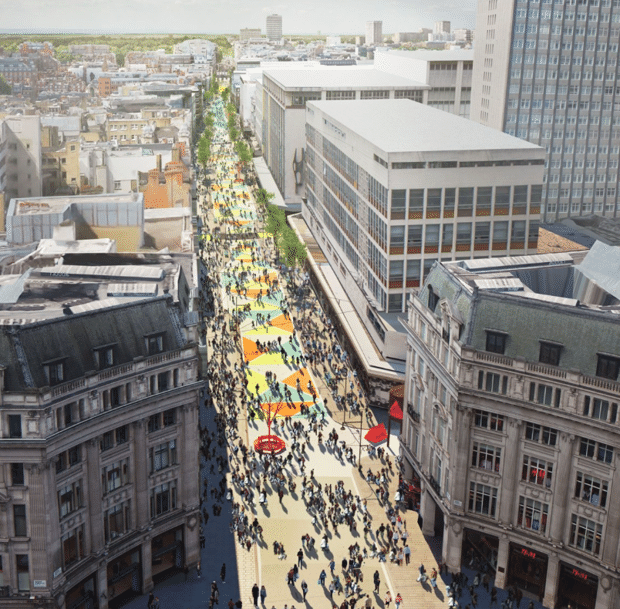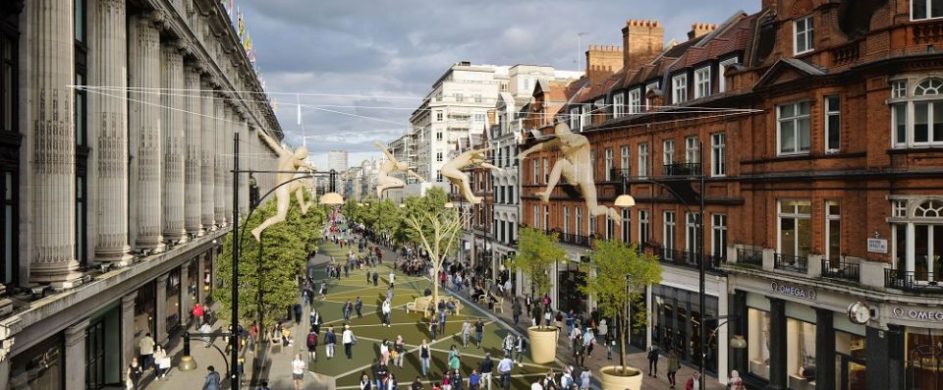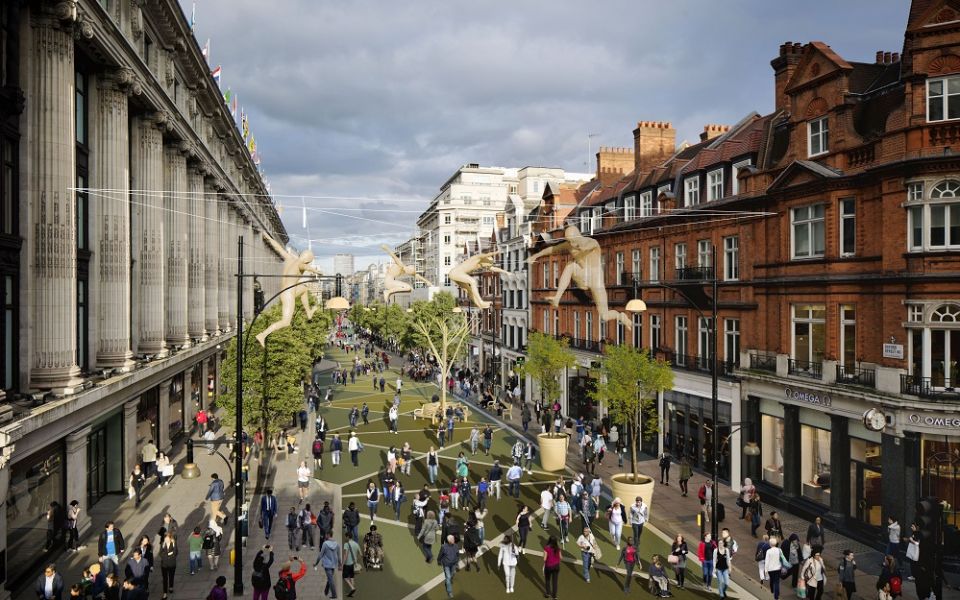After years of discussion, it’s finally happening: London’s Oxford Street is going to be pedestrianized. Know as a key London axis and world-renowned as a place to shop (with stores as Primark, Topman, Clarks, Gap, Claire’s etc), this central core of West End has endured for years as a notorious fume trap because it’s such a vital corridor for buses. By the end of the year, 800 meters of the street will become car-free; the remaining sections on the eastern side (from Oxford Circus toward Tottenham Court Road) are set to be pedestrianized in two stages in the years following.
///
Dopo anni di discussioni, finalmente sta per accadere: Oxford Street a Londra sarà presto pedonalizzata. Conosciuta come un asse viario fondamentale di Londra e rinomata in tutto il mondo come meta dello shopping (con negozi come Primark, Topman, Clarks, Gap, Claire’s ecc.), questa nucleo centrale del West End è stato per anni una trappola di fumo famosa poiché corridoio del trasporto vitale per gli autobus. Entro la fine dell’anno, 800 metri della strada diventeranno senza auto; le restanti sezioni sul lato orientale (da Oxford Circus verso Tottenham Court Road) saranno pedonalizzate in due fasi negli anni successivi.

With an estimated 500.000 pedestrians walking through it each day, nowadays Oxford Street is one of the busiest shopping thoroughfares in Europe. Currently pedestrians share space with two lanes of traffic, meaning that shoppers, tourists, residents and workers have to battle with streams of taxi cabs, rickshaws, buses and bicycles. In this new proposal, the road would be brought up to the same level as the pavement (making it more accessible for wheelchair users), buses would be re-routed and taxi ranks expanded; for the cycle-users, there’s a promise for a separate consultation (to be held in the summer) to implement new cycle routes along quieter parallel roads either side of Oxford Street. With this kind of configuration, the street would be able to accommodate a sequence of public plazas (lined with trees and benches) and the traffic would still run north to south across the road at certain points. An 800-metre piece of public art could be commissioned to design the new space.
///
Con una stima di 500.000 pedoni che lo percorrono ogni giorno, oggi Oxford Street è una delle arterie commerciali più trafficate d’Europa. Attualmente i pedoni condividono lo spazio con due corsie di traffico, il che significa che i turisti, i residenti e i lavoratori devono combattere con una serie sterminata di taxi, risciò, autobus e biciclette. In questa nuova proposta, la strada sarebbe stata portata allo stesso livello del marciapiede (rendendolo più accessibile per i disabili), gli autobus sarebbero reinstradati su altri percorsi e gli stalli per i taxi aumentati; per chi va in bici, c’è una promessa per una consultazione separata (che si terrà in estate) per realizzare nuovi percorsi ciclabili lungo strade parallele più tranquille su entrambi i lati di Oxford Street. Con questo tipo di configurazione, la strada sarebbe in grado di ospitare una sequenza di piazze pubbliche (fiancheggiate da alberi e panchine) e il traffico continuerebbe a correre da nord a sud attraverso la strada in determinati punti. Un’opera d’arte pubblica di 800 metri potrebbe essere commissionata per progettare il nuovo spazio.
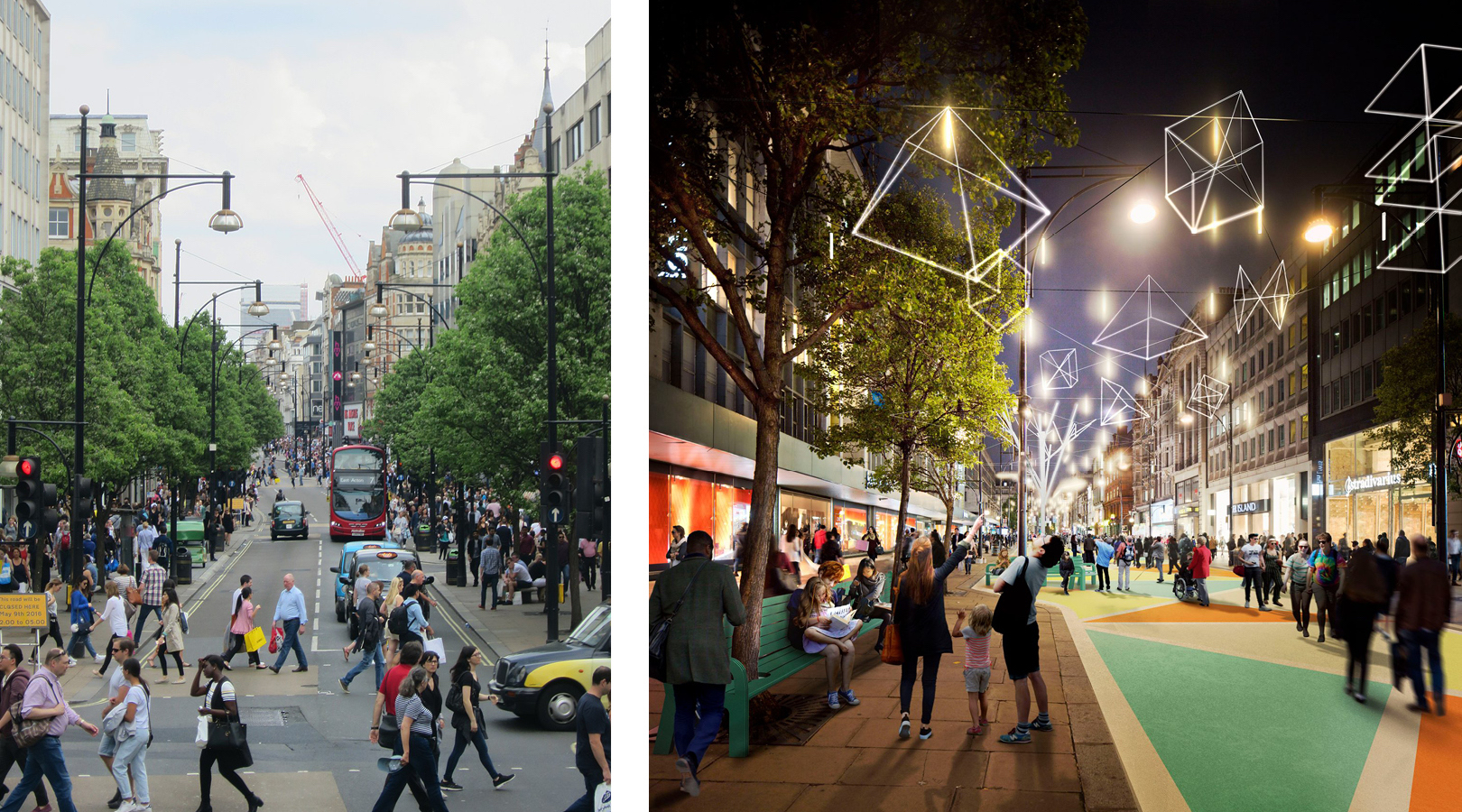
The rail transit will be a viable alternative way to the car: despite the tube line that runs underneath the street (the Central Line) is nowadays hugely congested, at the end of 2018 this stretch of subway will finally get major relief thanks to the opening of Crossrail, a huge underground east-west heavy rail project that should take most commuter traffic and provide two major new stations on Oxford Street: Bond Street and Tottenham Court Road stations will host Crossrail platforms. With Crossrail (already named “Elizabeth Line”) taking more of the strain, the Underground could (at least initially) find itself with more breathing space, attracting more of the passengers that currently use buses: this should take a lot of pressure off street-level transit.
///
Il trasporto su ferro sarà una valida alternativa alla macchina: nonostante la linea (la Central Line) che corre proprio sotto la strada sia oggi estremamente congestionata, alla fine del 2018 questo tratto di metropolitana troverà finalmente sollievo grazie all’apertura della Crossrail, un gigantesco progetto ferroviario pesante che percorrerà la città da est ad ovest nel sottosuolo e che dovrebbe prendersi la maggior parte del traffico dei pendolari, aprendo due importanti nuove stazioni su Oxford Street: le attuali stazioni di Bond Street e di Tottenham Court Road, infatti, ospiteranno le nuove banchine della Crossrail. Con la Crossrail (già ribattezzata “Elizabeth Line”) che assorbirà la maggior parte dei flussi, la Underground potrebbe (almeno inizialmente) trovarsi con più spazio per respirare, attirando più passeggeri che attualmente usano gli autobus: questa mossa dovrebbe portare la Central Line ad assorbire molta della richiesta di trasporto locale su gomma.
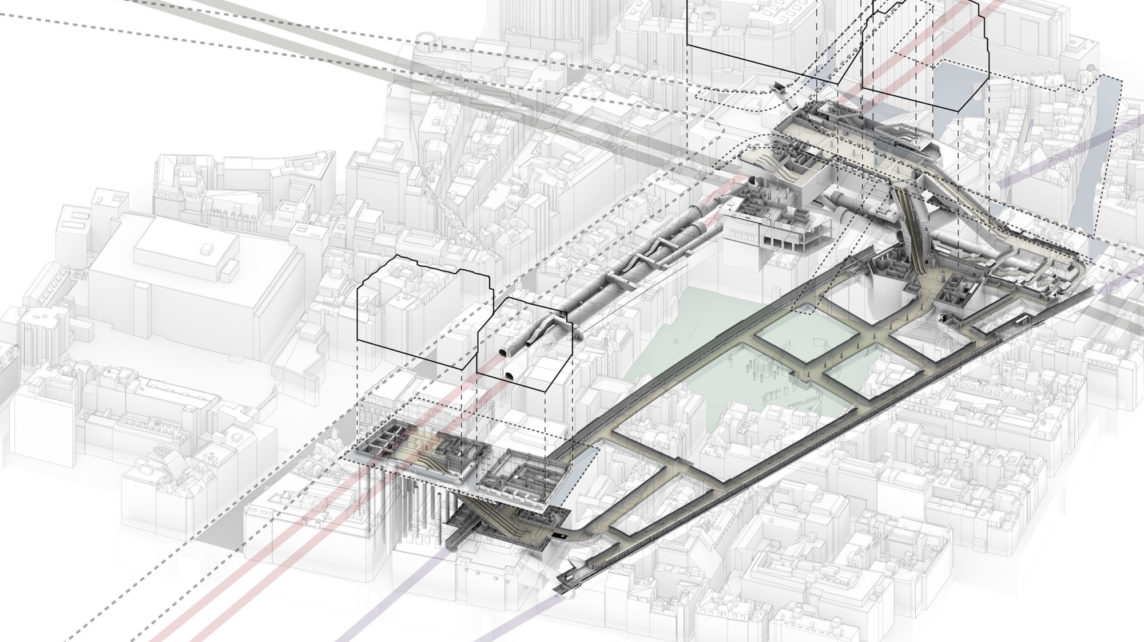
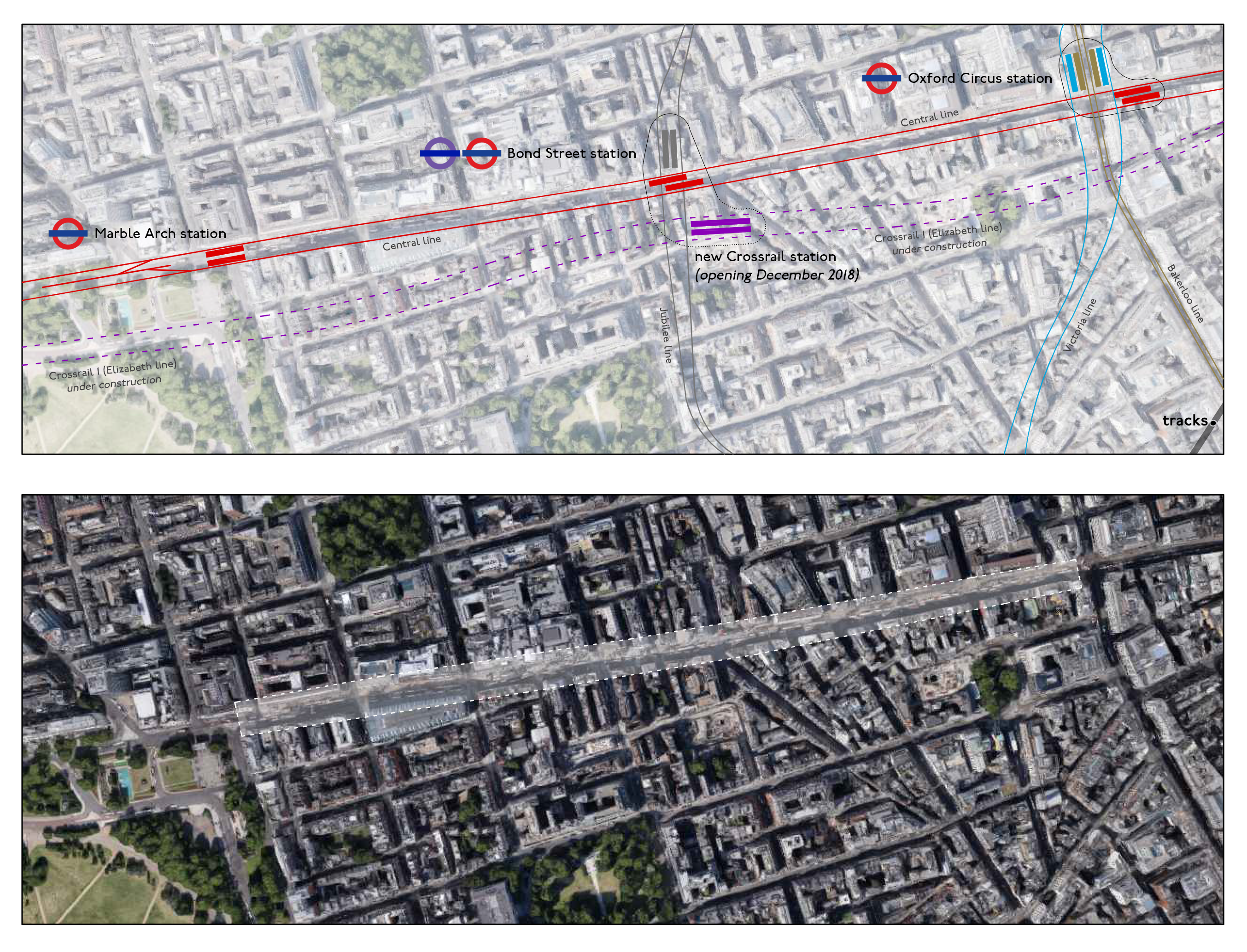
The project is estimated to cost £60 million, which Transport for London hopes to fund with government and private sector money. “This is a hugely exciting moment for the capital,” Mayor Sadiq Khan said in a statement. “Oxford Street is world famous with millions of visitors every year, and in just over a year the iconic part of the street west of Oxford Circus could be transformed into a traffic-free pedestrian boulevard.”
///
Il costo del progetto è stimato in 60 milioni di sterline, che Transport for London spera di finanziare con fondi del governo e del settore privato. “Questo è un momento estremamente eccitante per la capitale”, ha dichiarato il sindaco Sadiq Khan in una dichiarazione. “Oxford Street è famosa nel mondo con milioni di visitatori ogni anno, e in poco più di un anno la parte iconica della strada ad ovest di Oxford Circus potrebbe essere trasformato in un viale pedonale senza traffico.”
